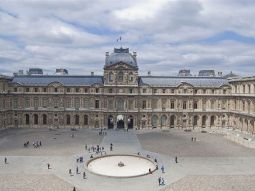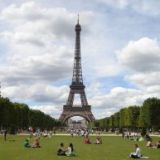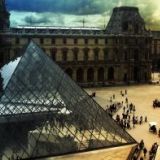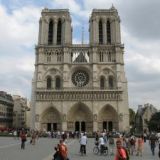Facts about the Louvre
Facts about the Louvre abound! One of the world's largest and most renowned museums of art, the Musee du Louvre is a central landmark in the city of Paris. Over eight million people, 65% of them international tourists, come to view its more than 35,000 pieces of work and exhibits each year. Located on the banks of the River Seine, the Louvre is close to all the attractions and amenities of Paris and is the place to visit if you want to see masterpieces created by artists such as Leonardo da Vinci, Rembrandt, Raphael, and Caravaggio. The Louvre's most famous painting is the portrait of the Mona Lisa, whose enigmatic smile has been the subject of conversation and controversy among kings, emperors, and the public for centuries. A special room was built exclusively to house the Mona Lisa, which is encased in bulletproof glass and protected in a climate-controlled environment.
However, here are some less well-known facts about the Louvre. Did you know that in addition to its collections of paintings, the Louvre contains prints and drawings, sculptures and artifacts from ancient Egypt and Greece, Near Eastern and Roman antiquities, as well as Islamic Art? Moreover, some of the museum's statues and sculptures are located outside, as the Louvre incorporates the Tuileries Gardens. And if you are standing on the outside, it's easy to recognize the Louvre on account of the mesmerizing glass pyramid located in its central courtyard, which serves as the main entranceway to the museum.
 Photo by: King Of Hearts
Photo by: King Of Hearts
If you are a history buff, here are the historical facts about the Louvre:
- What we know today as the Louvre was originally built as a fortress by Phillip II in the 12th century
- The fortress was continually altered throughout the Middle Ages
- In 1546, Francis I acquired Leonardo da Vinci's Mona Lisa painting and renovated the fortress Renaissance style, giving rise to the Louvre Palace
- In 1682 Louis XIV chose Versailles as his primary residence, and from then until the French Revolution the Louvre became an exhibition of the royal collections and a residence for French artists
- In 1791, the newly formed French Assembly declared the Louvre "a place for bringing together monuments of all the sciences and arts"
- In 1792, Louis XVI was imprisoned and the royal collection became national property
- In 1793 the museum opened its doors to the public
- In 1848, the government of the French Second Republic paid two million francs to repair the existing museum and to complete its galleries
- During WWII the museum was cleared until after France's liberation in 1945
- The Musée du Louvre is currently home to some of the world's most noted pieces of art and ancient artifacts
- The museum gained fame again when it was cited as the alleged final resting place of Mary Magdalene in the film "The Da Vinci Code"
Finally, here are some miscellaneous facts about the Louvre:
- The Louvre's bookstore holds the largest assembly of books on art history in France. It also sells visitors guides in over ten languages, has a large children's section, and sells thousands of prints from the museum's collection
- The Louvre is open daily from 9am to 6pm except for Tuesdays and national holidays; it is open until 10pm on Wednesdays
- If you book ahead of time, you can enjoy a 2-hour guided tour taking you to the most well-known exhibits, after which you can explore the museum at your leisure









New! Comments
Have your say about what you just read! Leave me a comment in the box below.